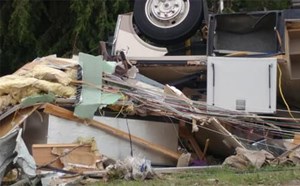
Intersection of CSC and Load Balancing in Washington State
Stephen H. Mitchell, MD, FACEP
Stephen Morris, MD, MPH
Load balancing by patient transfer across regions and health systems during the COVID-19 pandemic has been a response to limited and maldistributed resources.1,2,3 Washington State with its large land mass, concentrated healthcare system, geographic barriers and many critical access hospitals has historically struggled with equitable access to care. In response to COVID-19 pandemic, UW Medicine (Harborview Medical Center, Department of Emergency Medicine), the Northwest Healthcare Response Network (NWHRN), and WA State Department of Health (WA DOH) developed the Washington State Medical Coordination Center (WMCC) to centralize distribution of patients unable to access care through normal transfer mechanisms to referral hospitals. Prior to the COVID-19 pandemic, Washington State had in place a healthcare resource tracking and alert system, WATrac, to assist with bed capacity, scarce resources, and to coordinate patient distribution during healthcare emergencies.4 Building on the WATrac platform, WMCC morphed from an ad hoc effort to coordinate care between health systems to a statewide 24/7 system using a clinically staffed call center to facilitate equitable distribution of patients between facilities across the state. The WMCC, having been developed and refined during the first waves of the pandemic was fully functional when the Delta variant became prominent in August 2021. By January 2022 the WMCC has handled over 3000 interfacility load balancing request cases.
Washington State has a disparate population at risk for significant natural disasters such as severe weather, earthquakes, tsunamis, and forest fires. As such, the states healthcare related disaster systems receive appropriate attention, largely coordinated by the states healthcare coalitions the NWHRN and the REDI Network. The shared understanding of the region's disaster risk has also facilitated communication and collaboration regionally and across health systems as evidenced by the periodic ‘Cascadia Rising’ exercise which simulates a major earthquake event and response from Northern California to southern British Columbia.5
Work developing and vetting the Washington State’s Crisis Standards of Care (CSC) guidelines began in 2012. Using specialty consultations, public engagement and a multi-specialty regionally and health system representative committee, CSC clinical guidelines were developed in the form of scarce resource cards. In October 2021 following the use of CSC in other parts of the country, DOH issued the ‘Washington State Crisis Standards of Care Triage Team Operational Guidebook’ codifying how CSC would be implemented.6 It further reinforced that CSC would only be implemented on a state, not a regional or health system level. The designed CSC triage team consists of clinicians, administrators, and ethicists, not involved in the clinical care of the patient, working under a robust oversight system.
The combination of WMCC and its robustly developed CSC guidelines has the potential to become synergistic should resource scarcity begin to affect quality of care with resultant CSC deployment. The WMCC, which is continually working to avoid a single institution being overloaded, is by design working to avoid CSC implementation. However, should CSC be required, the WMCC is ideally positioned to further safeguard equity in CSC use across the state. This would come in the form of continuing to identify patients who could avoid having resources withheld by being transferred to a facility with that resource, and coordinating with CSC triage teams to keep decision-making consistent across facilities. Additionally, as with complex clinical care, the state’s many critical access hospitals and smaller regional hospitals will not be able to implement CSC triage teams. Here again WMCC will be able to aid implementation by using teams from larger health systems such as those affiliated with the states’ academic center (University of Washington School of Medicine).
As one of the first regions effected by the COVID-19 pandemic, and by its nature a region with complex disaster risks, healthcare equity needs and related infrastructure, WA state has been well positioned to implement systems and solutions to load balancing and potential CSC implementation.
- Lee AH, Dunn PF, Cooper S, Seger R, Raja AS, Safavi KC, Yun BJ. COVID-19 Level-Loading: Transferring Emergency Department Patients to a Partner Academic Medical Center Within a Healthcare System. Am J Med Qual. 2021 Sep-Oct 01;36(5):368-370. doi: 10.1097/01.JMQ.0000743384.54212.e7. PMID: 34225276; PMCID: PMC8404738.
- Boudourakis L, Silvestri DM, Natsui S, et al. . Using interfacility transfers to ‘level-load’ demand from surging COVID-19 patients: lessons from NYC Health + Hospitals. Health Affairs Blog. doi: 10.1377/hblog20200710.163676.
- White DB, Villarroel L, Hick JL. Inequitable Access to Hospital Care - Protecting Disadvantaged Populations during Public Health Emergencies. N Engl J Med. 2021 Dec 9;385(24):2211-2214. doi: 10.1056/NEJMp2114767. Epub 2021 Dec 4. PMID: 34874647.
- https://www.doh.wa.gov/ForPublicHealthandHealthcareProviders/EmergencyPreparedness/WATrac
- https://mil.wa.gov/cascadia-rising
- https://doh.wa.gov/sites/default/files/2022-02/821-151-CSC-TT-guidebook.PDF



